As League One begins to take shape, early-season table-toppers Ipswich Town travelled to Gillingham on Saturday as they looked to cement themselves at the league’s summit.
They have produced an impressive start to their return to the third tier, collecting 21 points from their opening nine games as they remain undefeated in the league – a statistic continued here, as they beat the Gills 0-1. It was Gillingham’s third loss of the season so far, winning two and drawing four of their matches played thus far.
In this tactical analysis, we will analyse the tactics of both teams, and look at how they contributed to the Tractor Boys’ sixth victory of the campaign.
Lineups
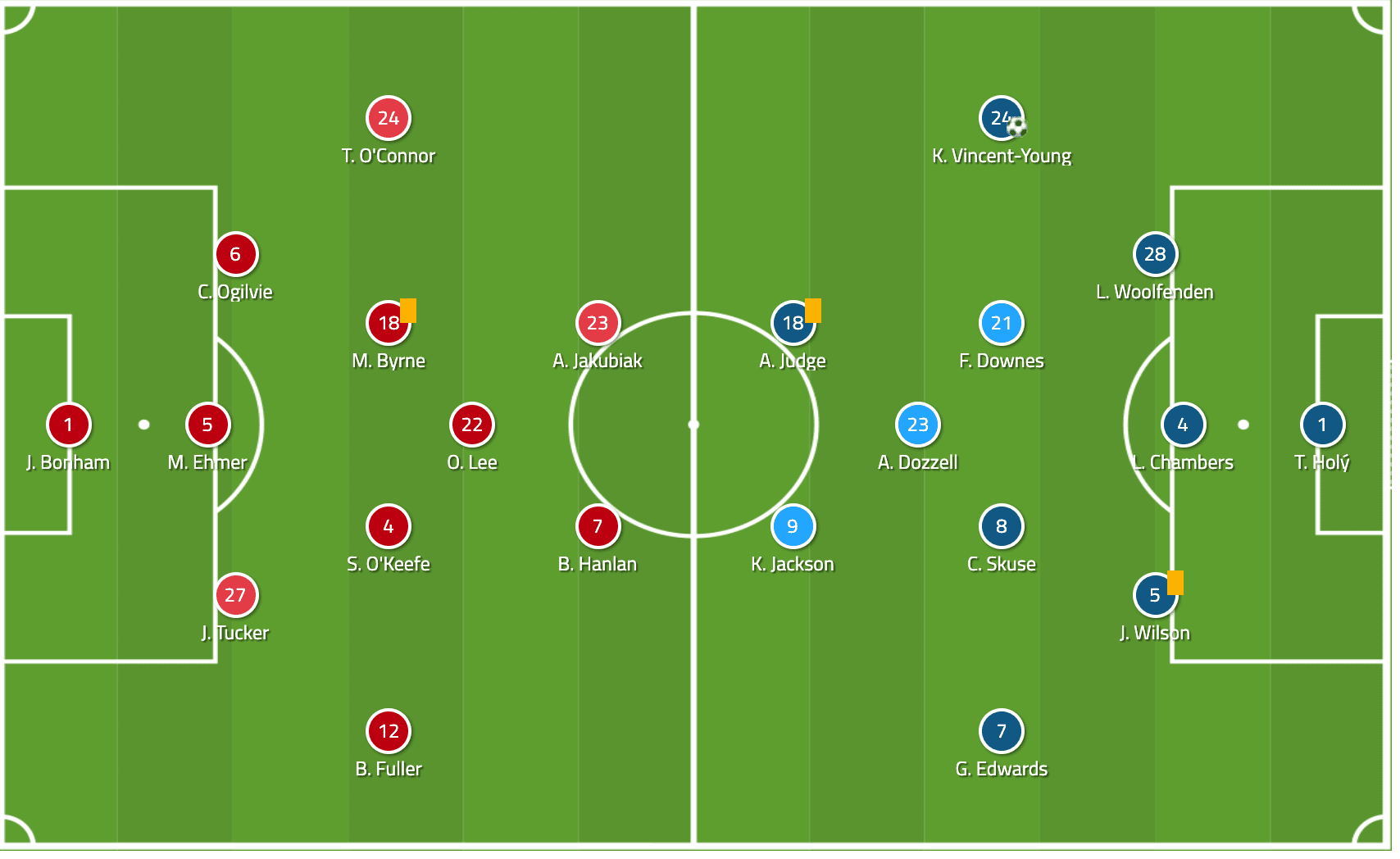
Both teams have shown tactical flexibility this year, having adopted a number of different systems within various games. As it was, they both were lined up in a 3-5-2 formation for this clash, however, both with a slightly different variation.
Steve Evans’ set up in a more rigid variant, with strikers Alex Jakubiak and Brandon Hanlan both out-and-out frontmen that can either play with their backs to the goal or be looking to run in behind. Stuart O’Keefe – in for the injured Alfie Jones – was tasked with providing genuine defensive solidity in midfield, with Mark Byrne and Olly Lee more box-to-box players who were looking to support their attackers. Jack Tucker kept his place after impressing as a substitute in their draw at Bristol Rovers last time out, whilst Barry Fuller was fit enough to start here having been an early casualty at the Memorial Stadium with a knock to the knee.
As for the visitors, they take on the system was more of a fluid one, with Alan Judge, despite being listed as a striker, being given licence to roam around the final third as he pleased. Youngsters Flynn Downes and Andre Dozzell partnered the experienced Cole Skuse in the centre of midfield, whilst Kayden Jackson operated as their traditional number nine upfront.
Judge grants freedom
The addition of Judge upfront may seem somewhat strange on paper given the reputation that the Irishman has gained throughout his many seasons in the EFL as being one of the most dangerous attacking midfielders in the divisions. However, manager Paul Lambert has revealed that the strategic positioning of the 30-year-old was to try and capitalise on spaces he felt would open up within the Gillingham midfield having analysed them previously – as they indeed did.
He was able to drift around to support play in various areas of the pitch, and allowed his team to continually overload such areas in order to retain the ball and look to build attacks. As Gillingham also had a midfield three, Judge’s ability to drop into deeper pockets allowed them to create a 4v3 centrally, and thus give them a better chance of being able to keep possession and drag Gillingham around the pitch. It also meant they could contain the Gills’ attacking threat from central areas due to their numerical superiority.
As is seen below, the home side are looking to break out with the ball and counter on their hosts having regained possession. With Dozzell wide on the left, and thus unable to immediately get back and delay the Gills from breaking, Judge possesses the tactical nous and realisation to account for Dozzell’s absence by dropping in and creating a 4v2 in favour of his team, as they swamp the Gills man on the ball as they look to prevent being countered on. As Judge is closing down from one side, Skuse and Edwards are positioned to the other and Downes is immediately in front of the man on the ball, they reduce the number of options he has as he looks to break away, squeezing him of time and space. He did this frequently whilst he side was out of possession, blocking central passing lanes in order to ensure they were compact defensively and could not be easily passed through.
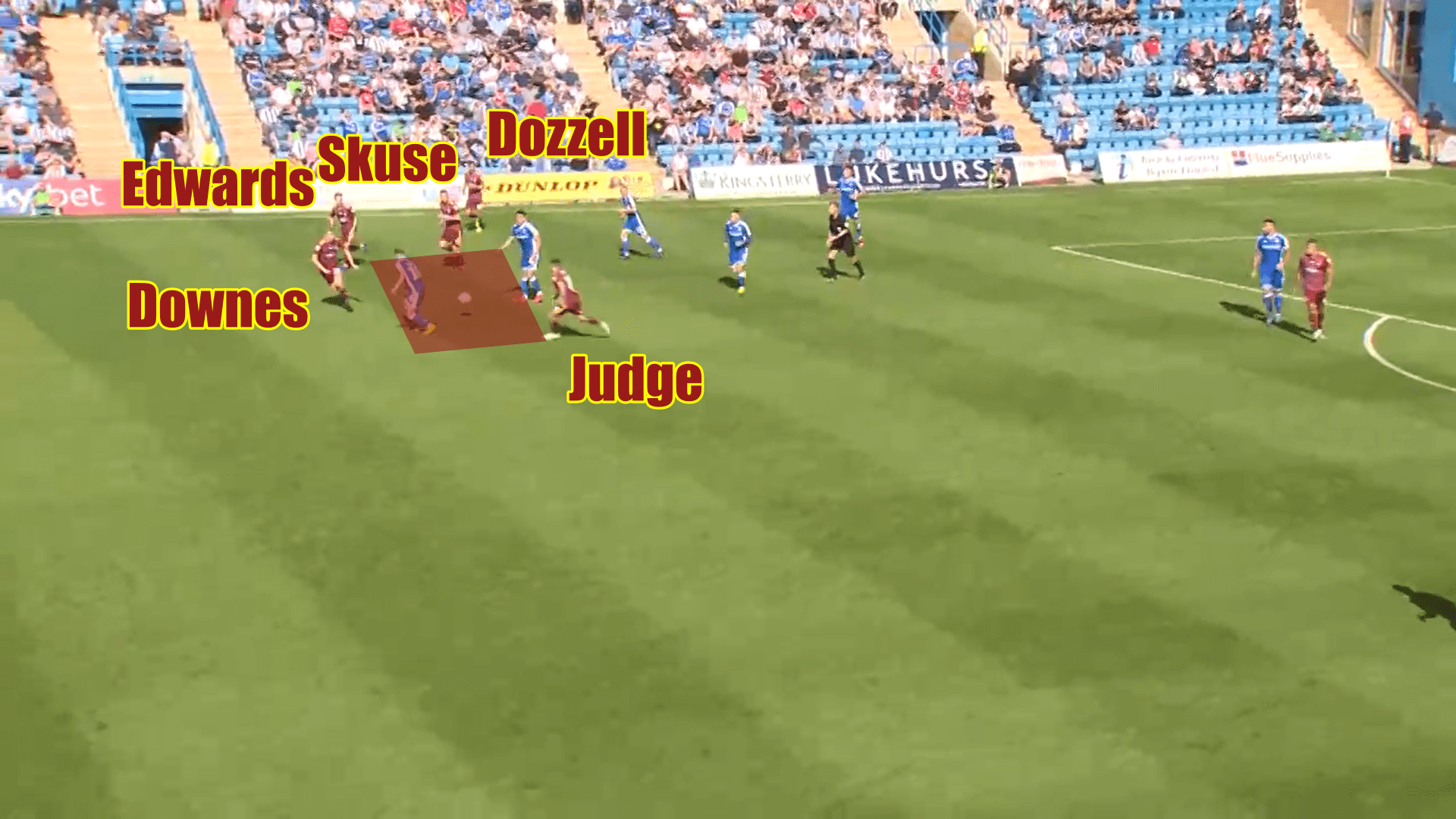
As well as showing an impressive desire to help out with the defensive side of the game, he also had the willingness to get up and support Jackson several times, whether through playing alongside him (seen below) or by trying to capitalise on any loose balls or knockdowns that Jackson was capable of winning. When playing as a genuine striker, he posed a threat on the shoulder of the last defender as he looked to use his pace and movement to run in behind, giving the Gillingham backline the problem of having to marshal both him and Jackson.
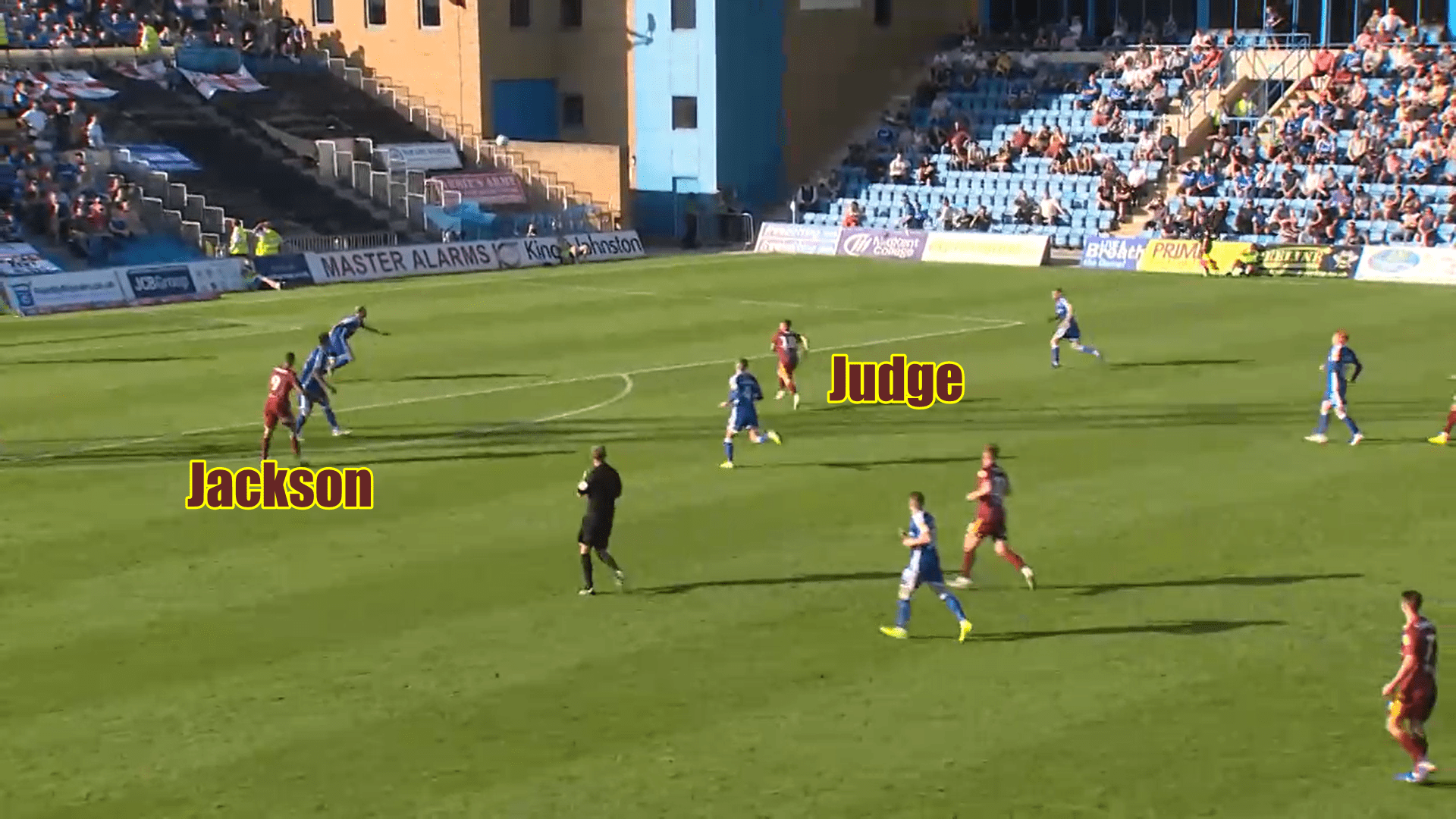
Yet at other times, he would retreat away from the Jackson, playing deeper in order to pick up anything that came back off the frontman so that he could then be on the front foot to look to drive at the Gills’ defence. As it was only O’Keefe that would usually be covering defensively for the home side, a second Ipswich midfielder would frequently copy Judge and look to advance high in support of Jackson, and thus outnumber O’Keefe when it came to looking to win the ball. An example of such is shown below. Here, O’Keefe is occupied by the on-rushing Dozzell, meaning that, having stepped off the Gillingham backline, Judge is able to pick up the ball untracked and unopposed.
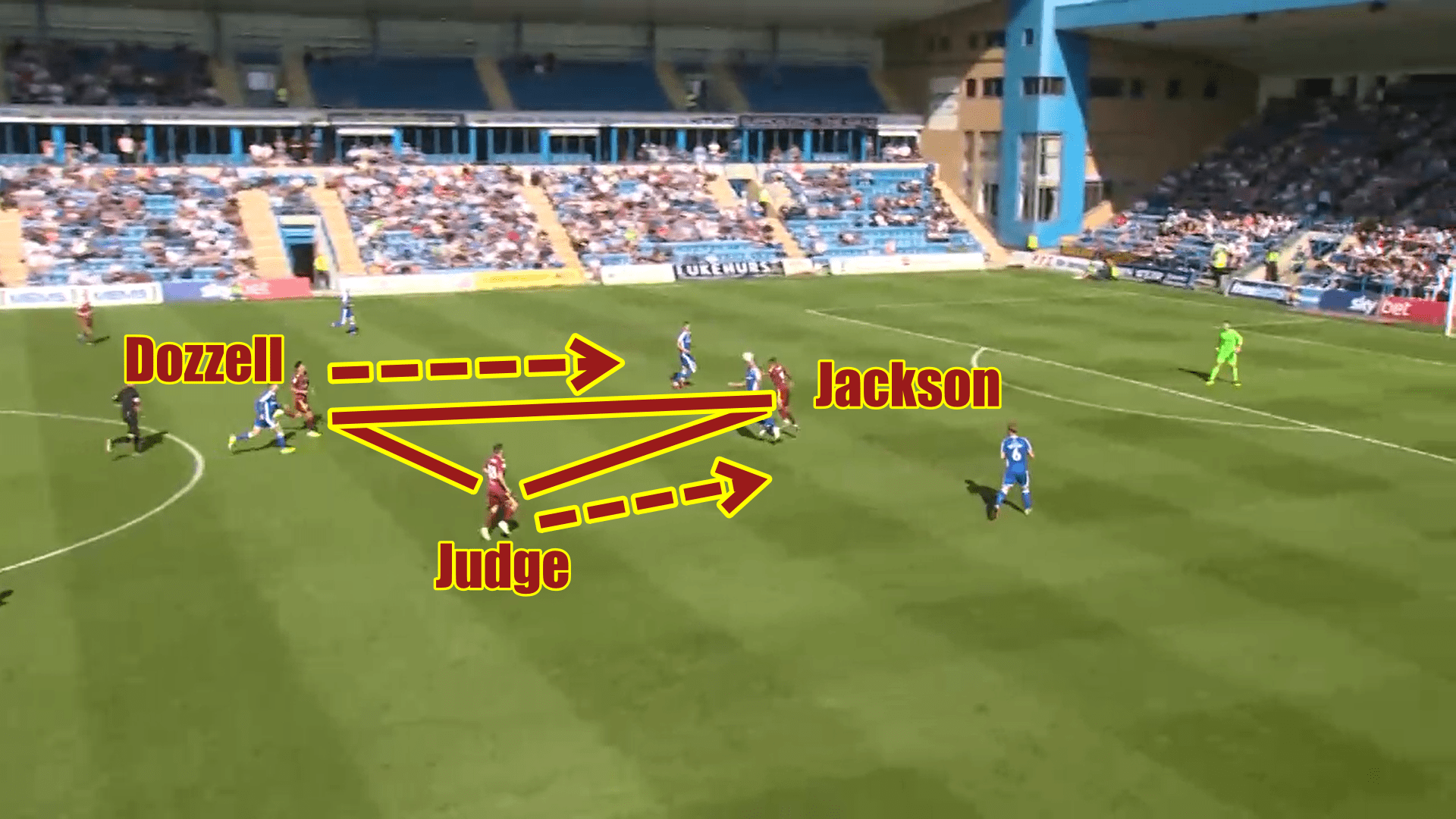
Finally on this point, Ipswich’s dedication to a fluid style of play is highlighted below, where they have pulled both of their listed strikers onto the left-wing in order to create an overload as they look to build an attack. Both Jackson and Judge have left their central defender in order to come and support Gwion Edwards, with Jon Nolan offering support from central midfield. This freedom for their attackers to roam around the pitch allowed them to adopt a slick, interchangeable style of play, with Judge the protagonist.
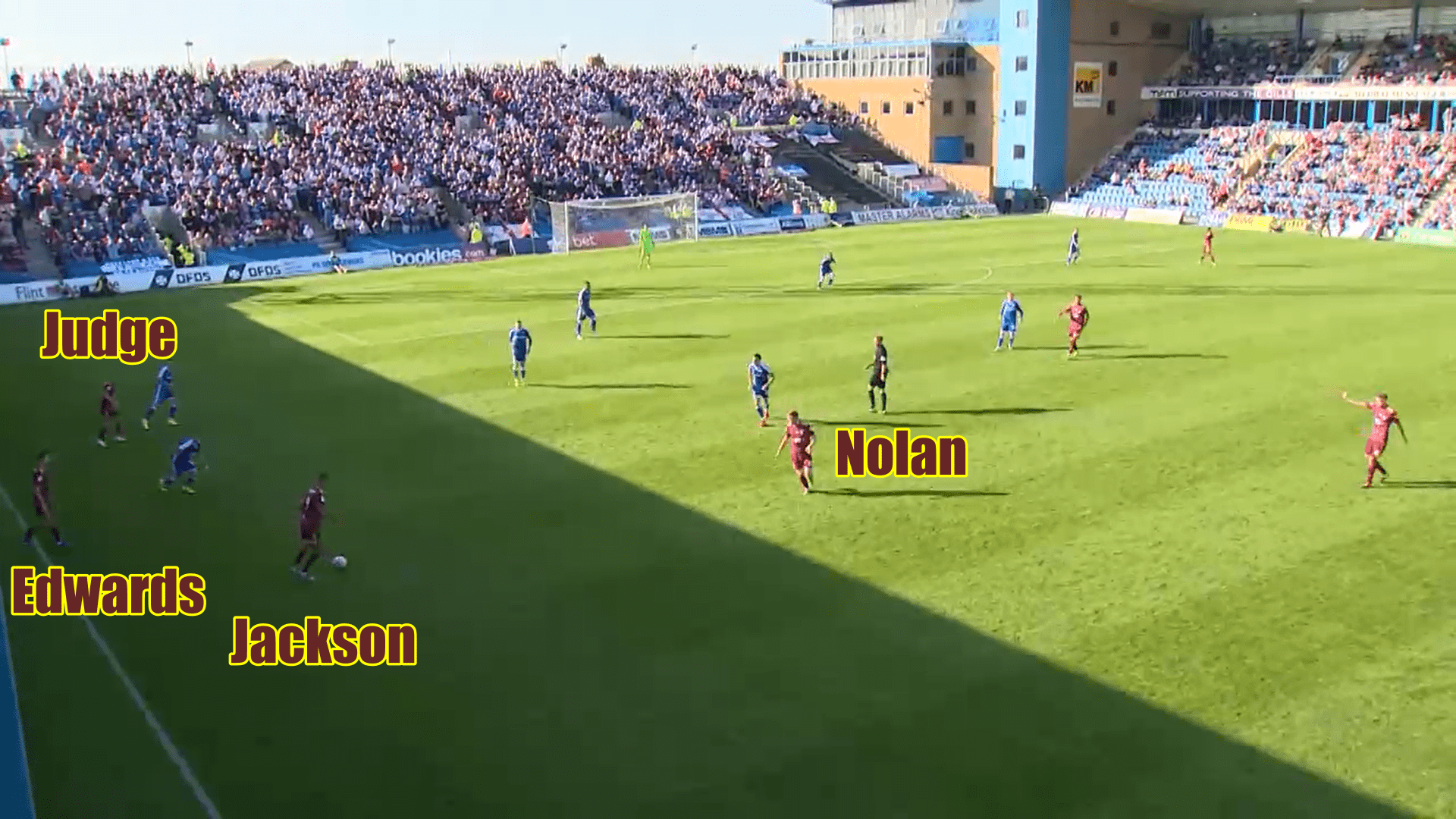
Gills look to dominate out wide
With the respective systems of both teams, whoever was able to have more players overcome their direct opponents in their respective one-versus-one battles was always likely to have a much better chance of winning the game. A key area for doing so was out wide, with the wing-backs of both teams being given the task of providing defensive security as well as offensive width.
It was a clear ploy by Evans’ men to look to try and overload the Ipswich wing-backs when the home side had the ball. Particularly on Edwards’ side, they would look to capitalise on his traditional position being as a winger, and therefore target him with their attacks as opposed to the full-back by trade Vincent-Young. They would do so by looking to play into the space behind Edwards in transition, however they let themselves down through either poor execution of passes or a lack of understanding of positioning.
In the first example of such a tactic below, as soon as O’Keefe receives the ball in the centre of the pitch it is clear that Fuller is instantly looking to run beyond Edwards and raid into the space he has vacated behind him, indicated by the blue square. Whilst Edwards has not yet recognised the danger behind him, Fuller has already started his run and thus given himself a head start.
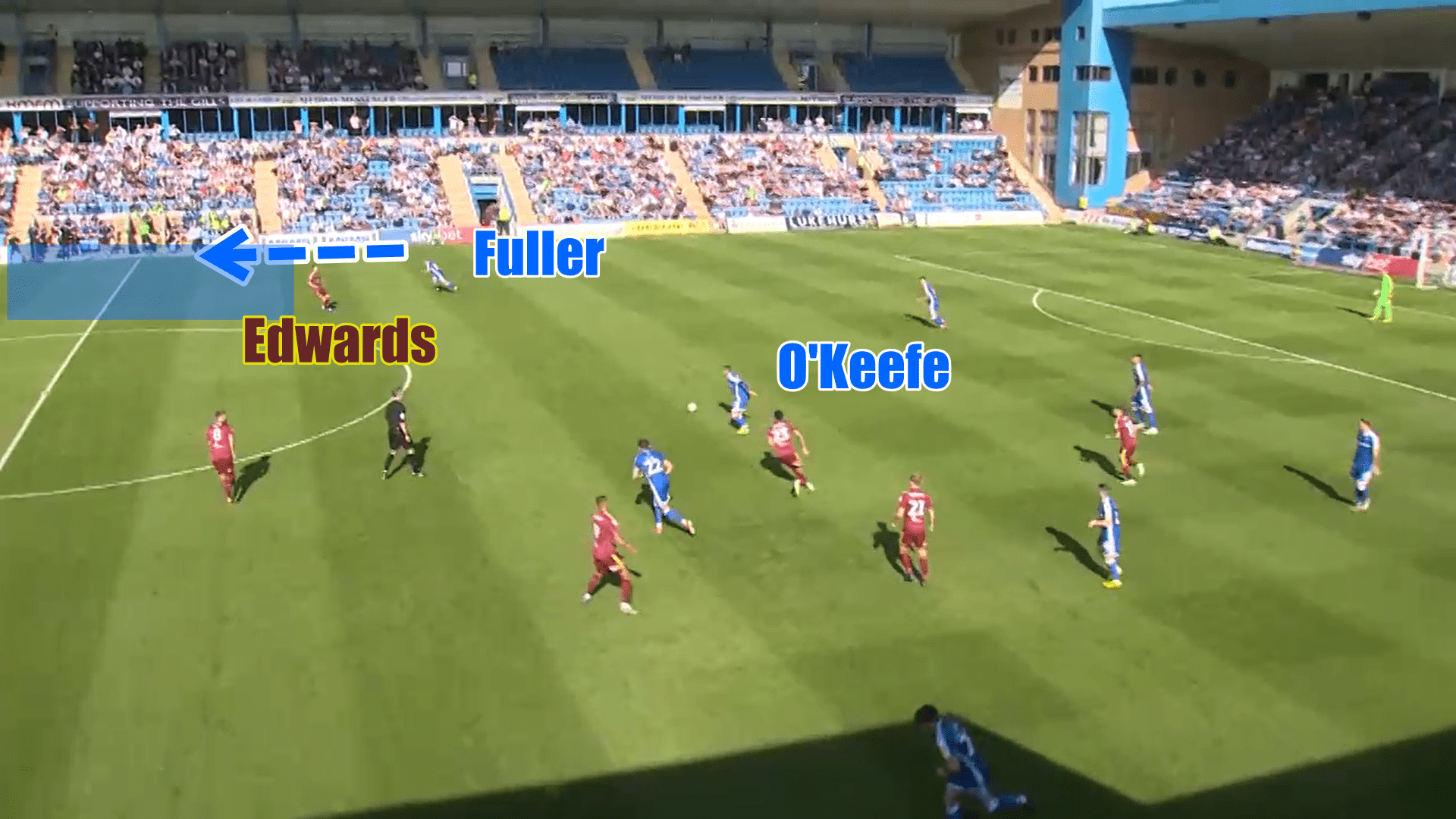
As it is, a combination of both the pass from O’Keefe being too heavy and smart positioning by left-sided central defender James Wilson did not see Fuller able to capitalize on such a pass, however the Gills were clearly looking to dominate in such areas of the pitch.
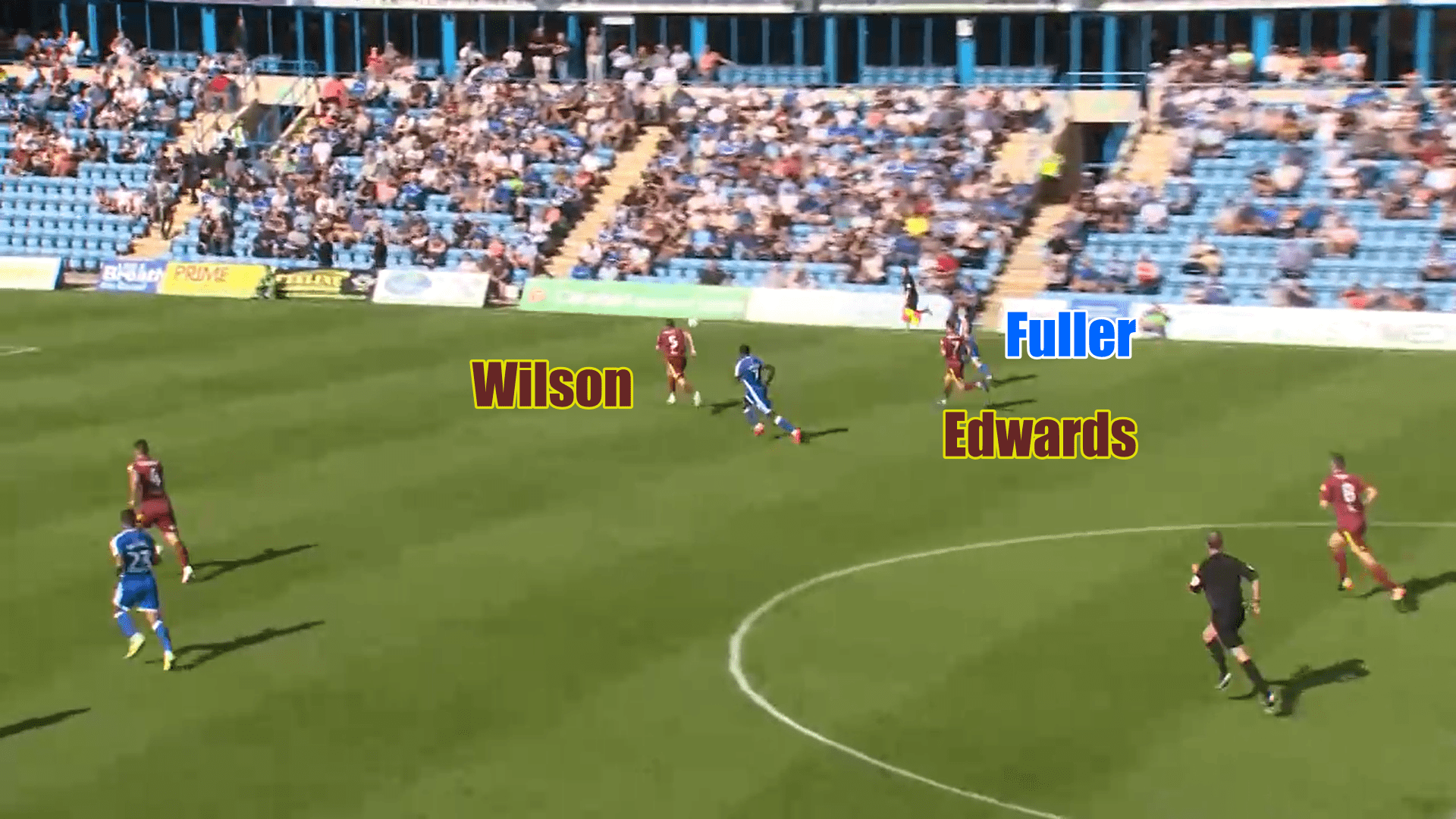
Another way in which the hosts looked to attack from wide areas was through the stepping out of defence with the ball by their wide central defenders, much like the now well-known tactic adopted by the trailblazers of overlapping centre-backs, Sheffield United. They would position their ball-near wing-back aggressively in order to pin back Town’s wing-back, which would create space for the central defender to step into and look to build from.
In one such instance below, left-sided centre-back Connor Ogilvie, having gained possession, advanced out of defence with the ball as he looked to drive his team forward. As Vincent-Young was preoccupied with wing-back Tom O’Connor being situated high and wide on the touchline, this prevented him from engaging the defender, and so forced Jackson to track him instead – thereby reducing Town’s threat on the counter-attack. As Ogilvie is able to step beyond Jackson, this creates a 2v1 in favour of Gillingham, however yet again they let themselves down through an inability to move the ball cleverly enough or with sufficient precision.
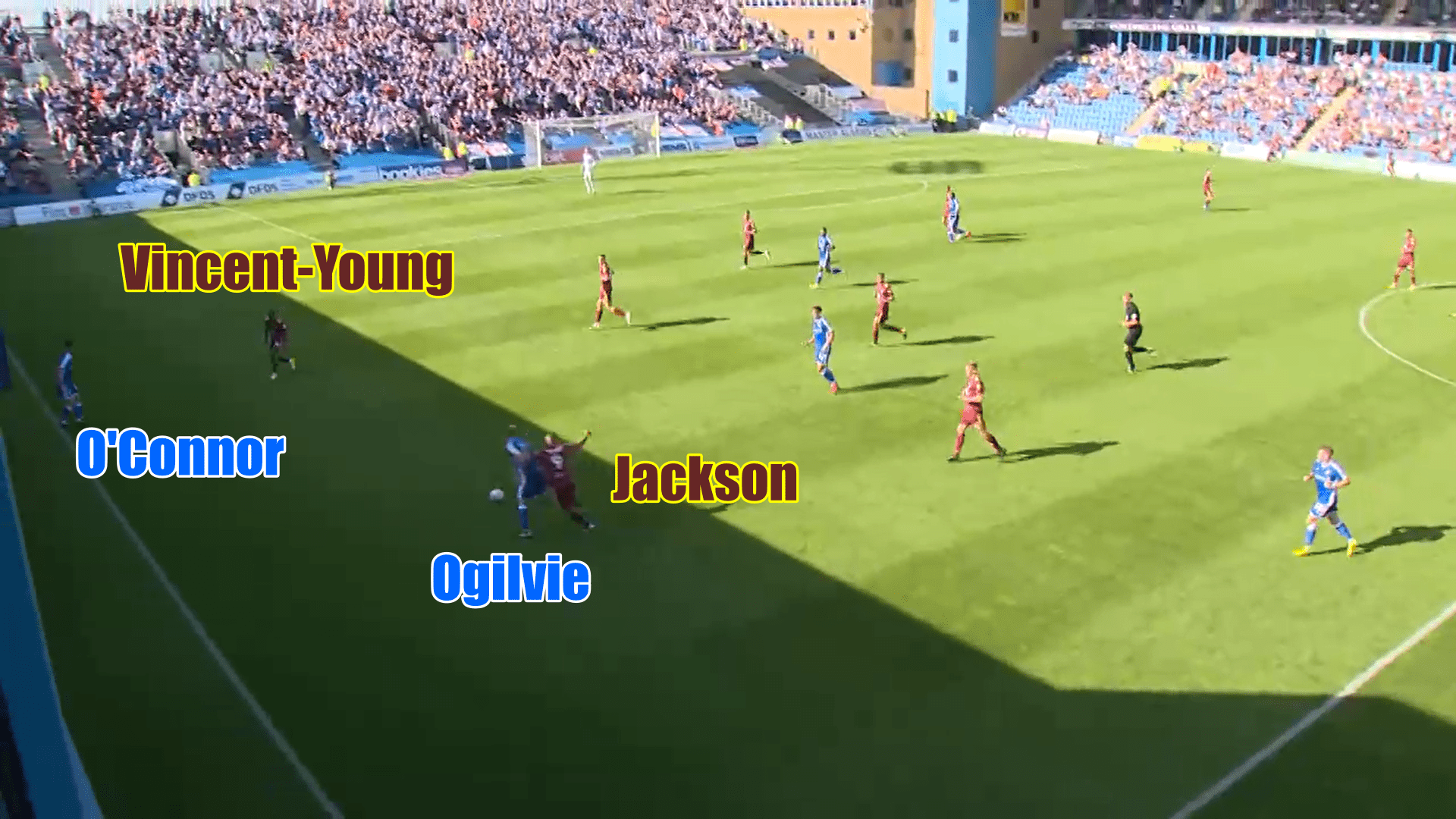
Furthermore, the positioning of Edwards was providing a genuine opening for the Gills to try and profit from. Such is his attack-minded nature, he frequently would gamble on supporting attacks and therefore leave himself exposed to being countered on in transition.
On this particular occasion, Hanlan, having broken away from his marker having initially received the ball to feet with his back to goal, has turned his man and is looking to drive at the Town backline. With both the right-sided and central centre-back either occupied or now the wrong side, this forces Wilson to come in narrow in order to engage the on-rushing Hanlan. With Edwards unaware of the space vacated by such a movement, had the Gills’ right-sided wide player been more aggressive here they would have been able to burst beyond Edwards and had a clear run on goal, with such space being illustrated by the blue square below.
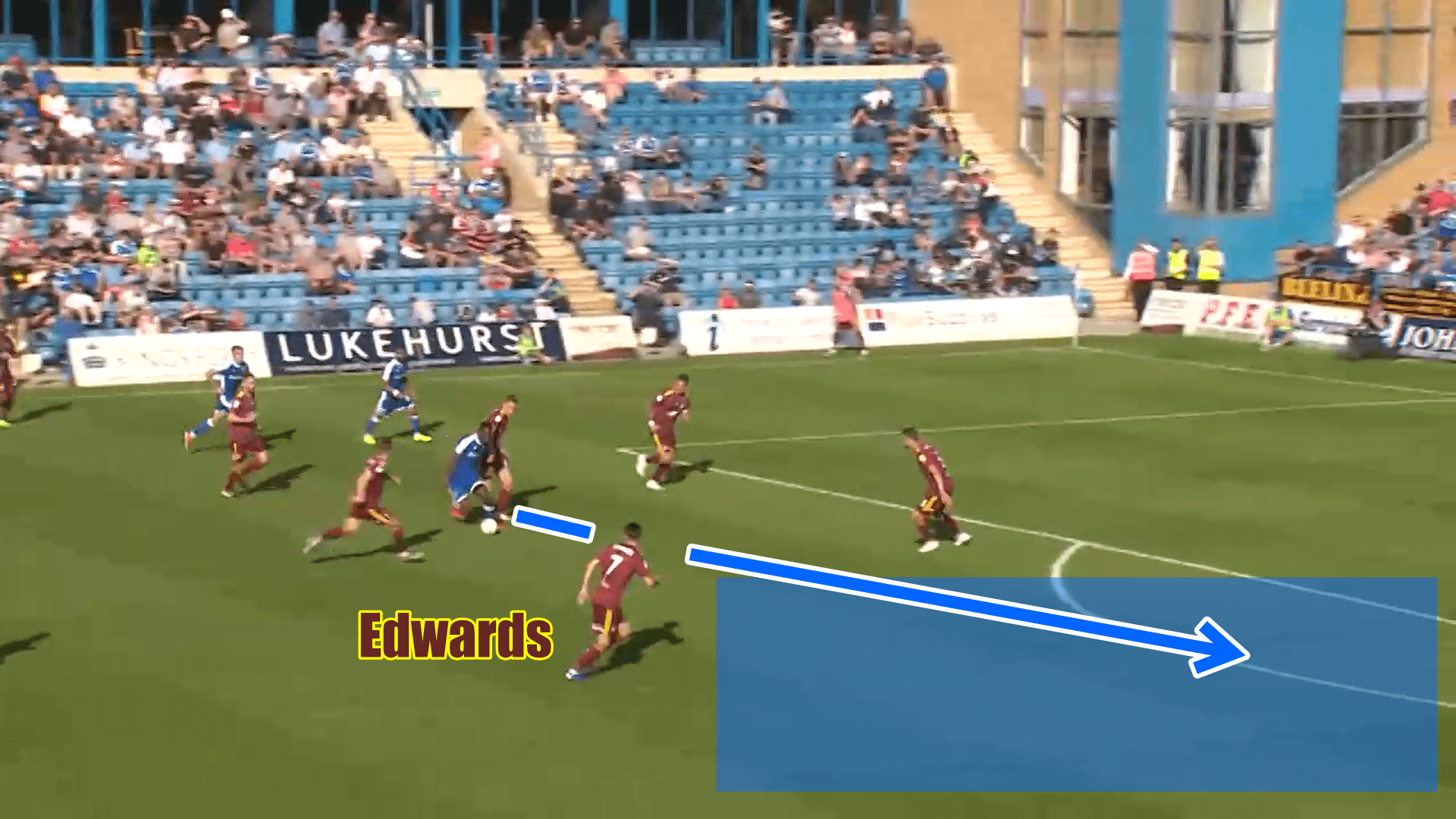
However, the following image shows the actual positioning of Lee Hodson (on in place of the injured O’Connor with Fuller switching sides) was not high enough to be able to provide such a pass, and so the move was not as incisive as it may have been.
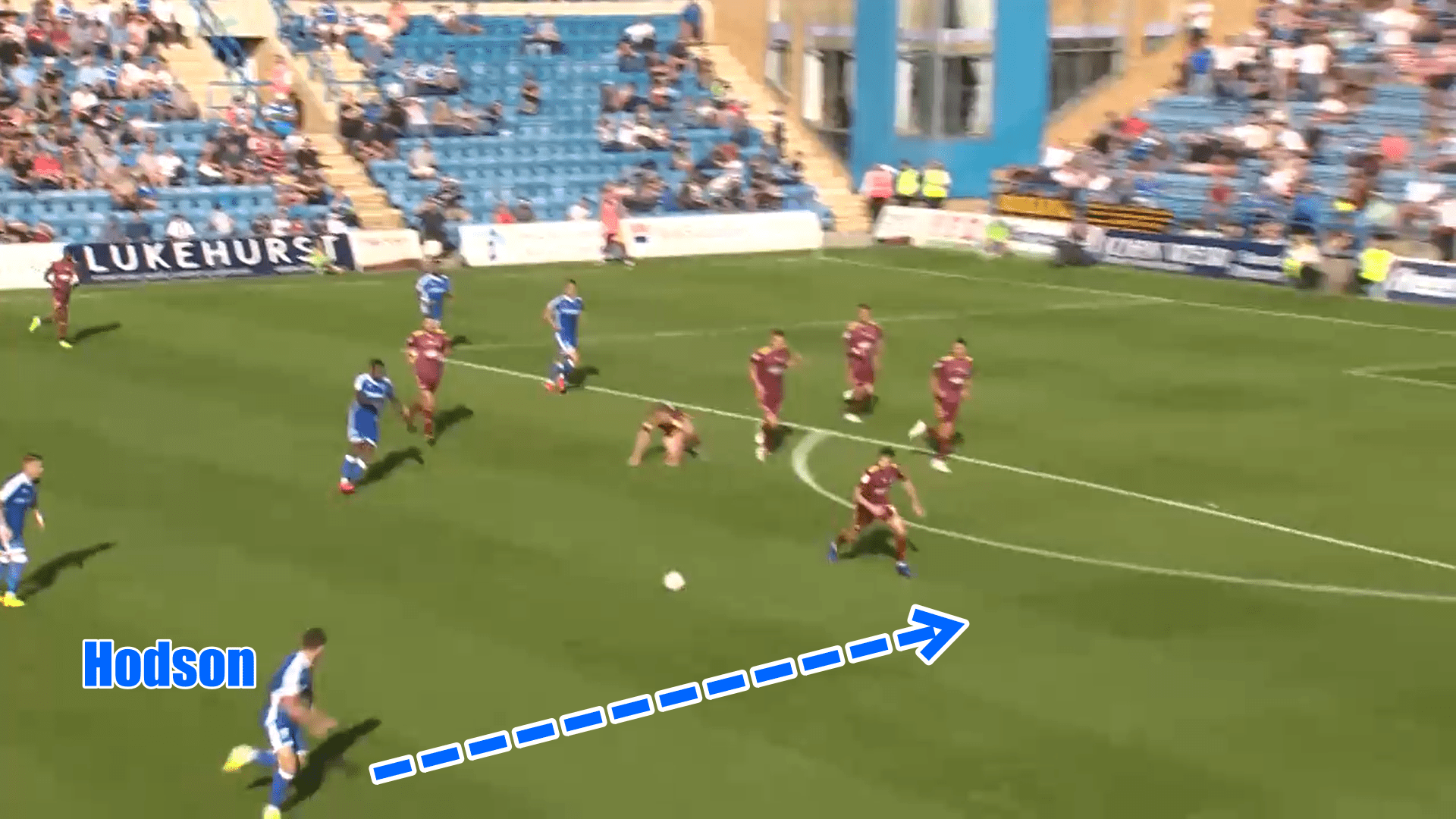
Gills try to prevent build-up from deep
A key factor in Ipswich’s early-season success has been their ability to retain the ball in their defensive third before then incisively punishing lapses in concentration by the opposition as they then pass through them. They look to make the pitch as wide as possible through stretching their wide central defenders, dropping off the central one of the three in order to create a ‘U’ shape and look to maximise the space in order to put into practice their expansive style. Yet here, Evans tried to prevent their retention within their own third being as smooth as usual.
He gave Lee the job of man-marking Skuse – a ploy that may seem somewhat strange given his role as the defensive fulcrum of Town’s set up. However, this gave Skuse, a man who is an expert at finding space in order to keep the ball and look to construct attacks, limited opportunities to do just this. As Lee would press Skuse from behind this would prevent him being able to get on the ball and turn, and instead forced him to play the way he was facing upon receiving.

This made it harder for Ipswich to build from deep as they like to, as their usual out-ball when under pressure in Skuse was being pressed and therefore was not afforded the time to keep the ball at will.
Conclusion
It was an intriguing contest between two teams with a similar system on paper, however with their own twists on it in practice. Gillingham were able to carve open a handful of clear-cut chances that arguably should have been put away, however it was their visitors who were the most ruthless in both boxes – and this ultimately proved to be the difference.

If you love tactical analysis, then you’ll love the digital magazines from totalfootballanalysis.com – a guaranteed 100+ pages of pure tactical analysis covering topics from the Premier League, Serie A, La Liga, Bundesliga and many, many more. Buy your copy of the September issue for just ₤4.99 here

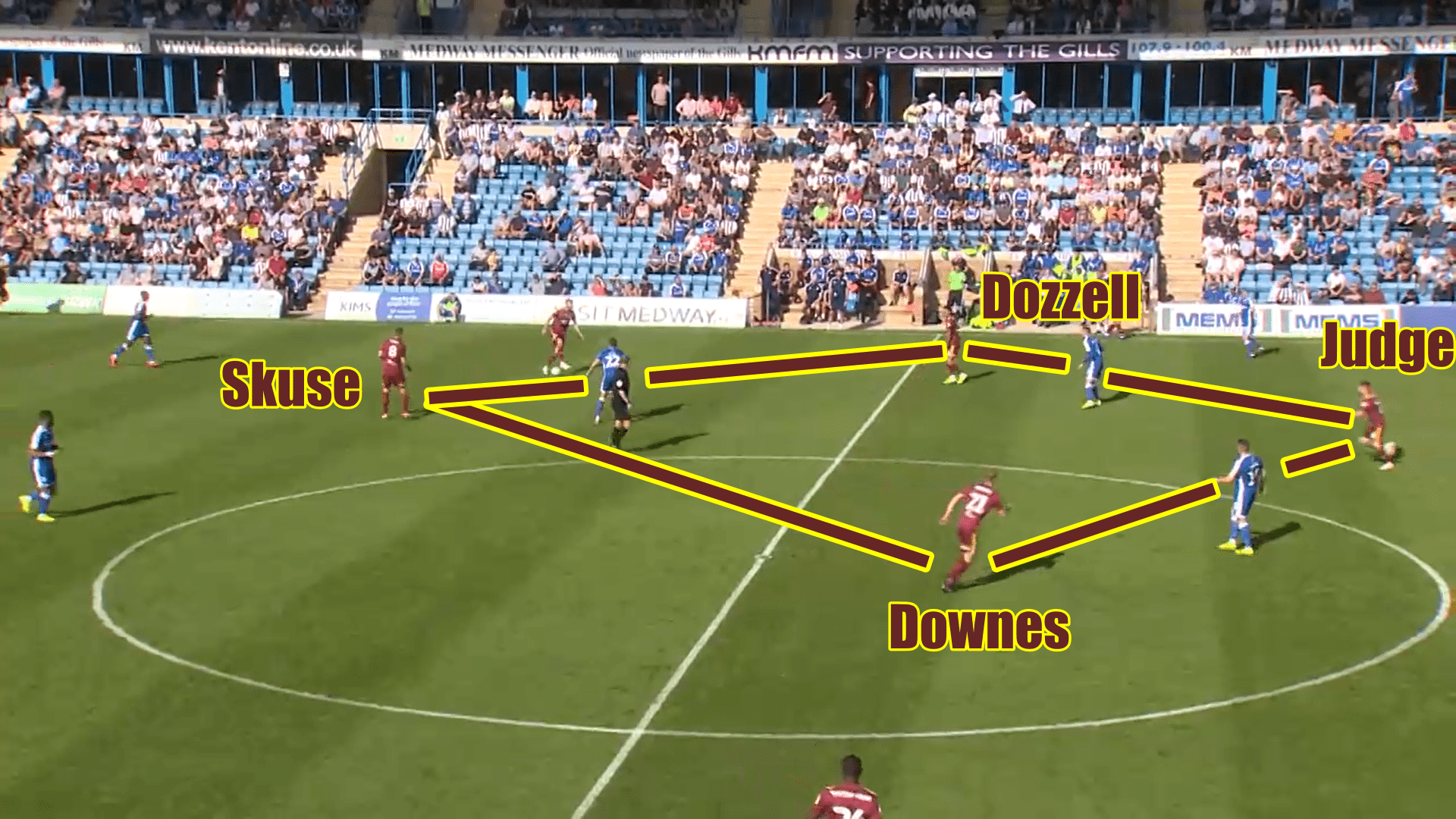




Comments